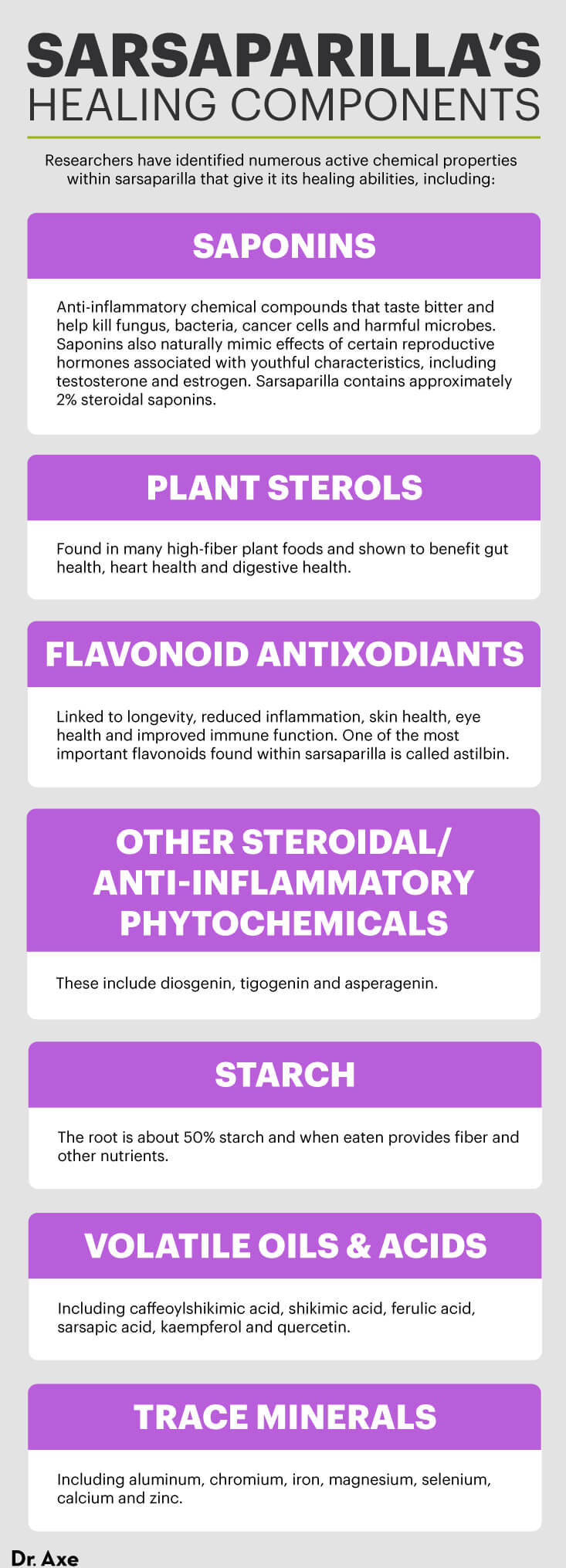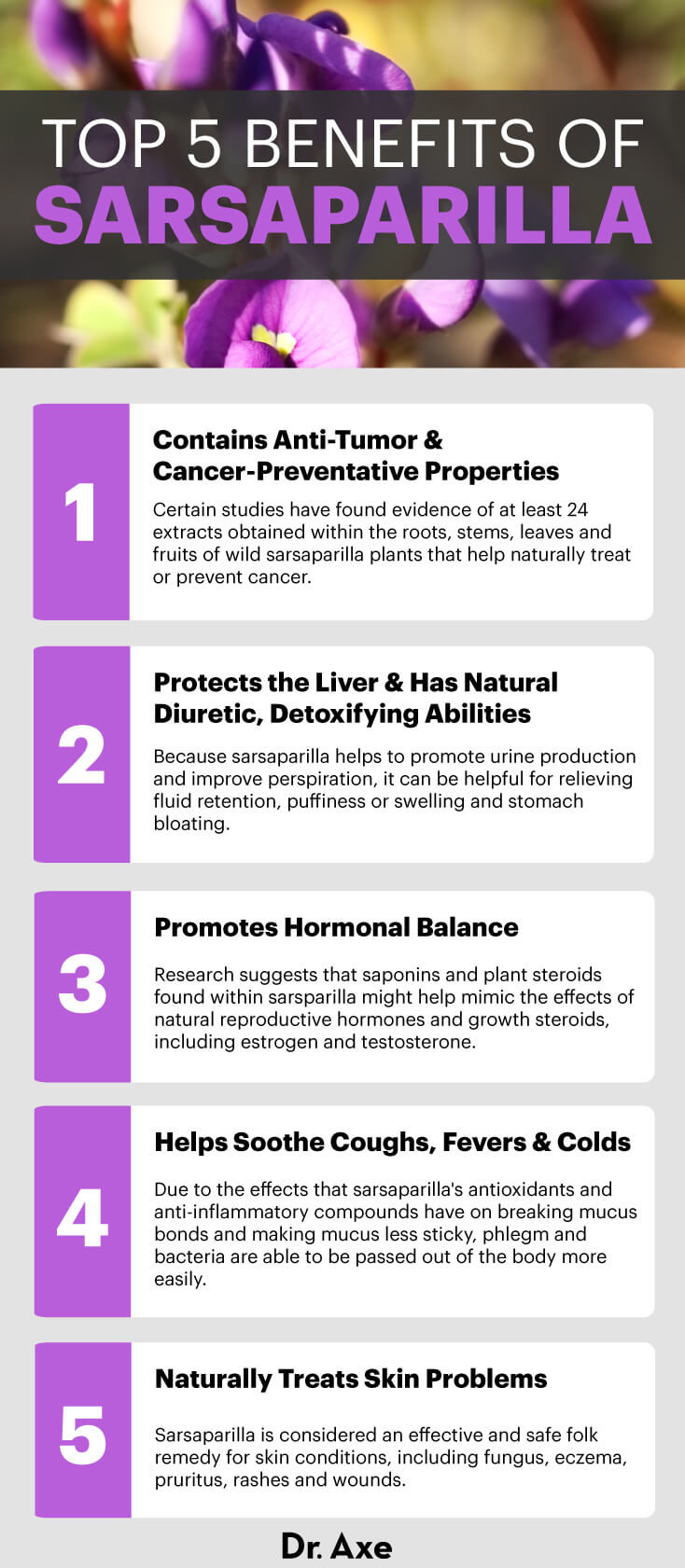This Dr. Axe content is medically reviewed or fact checked to ensure factually accurate information.
With strict editorial sourcing guidelines, we only link to academic research institutions, reputable media sites and, when research is available, medically peer-reviewed studies. Note that the numbers in parentheses (1, 2, etc.) are clickable links to these studies.
The information in our articles is NOT intended to replace a one-on-one relationship with a qualified health care professional and is not intended as medical advice.
This article is based on scientific evidence, written by experts and fact checked by our trained editorial staff. Note that the numbers in parentheses (1, 2, etc.) are clickable links to medically peer-reviewed studies.
Our team includes licensed nutritionists and dietitians, certified health education specialists, as well as certified strength and conditioning specialists, personal trainers and corrective exercise specialists. Our team aims to be not only thorough with its research, but also objective and unbiased.
The information in our articles is NOT intended to replace a one-on-one relationship with a qualified health care professional and is not intended as medical advice.
Sarsaparilla: The Healing Herb with Many Uses, Benefits and Recipes
February 7, 2020

There’s an herbal remedy that’s been used by native populations in Central and South America for thousands for years, shown to help relieve a wide range of problems from skin dermatitis to coughs.
Starting in around the 1950s, European physicians considered sarsaparilla root a “tonic, blood purifier, diuretic and sweat promoter” that could help treat serious, even life-threatening infections, such as leprosy or cancer.
Today, sarsaparilla products go by many different names depending on exactly which roots or plants are used to make the product, how they’re prepared, and what part of the world they come from. Other common names for sarsaparilla include Smilax, Honduran sarsaparilla, Jamaican sarsaparilla and zarzaparilla.
While it’s no longer used to treat skin infections from tropical bugs, leprosy or syphilis, sarsaparilla can commonly still be found in herbal preparations for balancing hormones, lowering fluid retention and improving overall immune function.
What Is Sarsaparilla?
Sarsaparilla (which has the species names Smilax Ornata, Smilax regelii or Smilax officinalis) is a perennial vine that grows in warm temperatures, such as those in the southern most states of the U.S. or Central and South America.
The plant is a member of the Liliaceae (lily) group of vines in the plant family called Smilacaceae, which according to the USDA includes over 300 different plant species.
Indian sarsaparilla (Hemidesmus indicus), also called sugandi root, Nannari or the eternal root, is different than “American sarsaparilla” and has some unique applications. It has a long history of use in Ayurvedic herbal medicine, which originated in India, and is considered a natural digestive aid, sexual tonic, sleep promoter, and anti-inflammatory agent. However there’s some evidence that Hemidesmus indicus does not have the same active compounds as the American type.
Wild sarsaparilla vines can grow very long (sometimes up to eight feet), have starchy, edible roots, and produce small berries that are edible for both humans and animals, especially birds. Although the roots are much more often used to make remedies today than the berries are, the mild-tasting berries and leaves can also be consumed.
In the the past, wild sarsaparilla plants, roots, vines and berries were all used in various ways to create beverages, fermented snacks and other treats that were enjoyed in places like India and Latin America.
For example, sarsaparilla is actually the name for a type of soft drink (similar to root beer) that’s flavored with the root of the plant. Unfortunately, sarsaparilla soda doesn’t have the same benefits as teas, supplements or tinctures made with this plant.
In herbal medicine practices, sarsaparilla plant roots are ground up and used to make natural remedies (tinctures, teas, supplements, etc.) that help treat some of the following health problems:
- Cancer and tumor growth
- Coughs and colds
- Rheumatoid arthritis pains, joint pain or rheumatism
- Skin problems, including eczema, psoriasis, toe fungus, wounds, ulcers and ringworm
- Fatigue
- Muscle pains or weakness
- Low libido and sexual impotence
- Headaches
- Gout
- Indigestion
- Liver damage
- Infections, such as sexually transmitted diseases like syphilis and gonorrhea
- Bloating/fluid retention
- Overheating and fevers
Nutrition Facts
What gives sarsaparilla its healing abilities? Researchers have identified numerous active chemical properties within this plant, including strong antioxidants, along with anti-cancer and anti-inflammatory compounds. These include:
- Saponins: Anti-inflammatory chemical compounds that taste bitter and help kill fungus, bacteria, cancer cells and harmful microbes. Saponins also naturally mimic effects of certain reproductive hormones associated with youthful characteristics, including testosterone and estrogen. Sarsaparilla contains approximately 2 percent steroidal saponins, including sarsaponin, smilasaponin (smilacin), sarsaparilloside, sarsasaponin parillin and smilagenin.
- Plant sterols: Found in many high-fiber plant foods and shown to benefit gut health, heart health and digestive health. Phytosterols within sarsaparilla include sitosterol, stigmasterol and pollinastano.
- Flavonoid antioxidants: Found in brightly colored fruits and veggies, such as berries, and linked to longevity, reduced inflammation, skin health, eye health and improved immune function. One of the most important flavonoids found within sarsaparilla is called astilbin.
- Other steroidal/anti-inflammatory phytochemicals: These include diosgenin, tigogenin and asperagenin.
- Starch: The root is about 50 percent starch and when eaten provides fiber and other nutrients.
- Volatile oils and acids: Including caffeoylshikimic acid, shikimic acid, ferulic acid, sarsapic acid, kaempferol and quercetin.
- Trace minerals: Including aluminum, chromium, iron, magnesium, selenium, calcium and zinc.
Does sarsaparilla have caffeine? While it has certain things in common with coffee and traditional teas, including its antioxidant content, it doesn’t contain significant amounts of caffeine. Most brands of sarsaparilla soda and teas are caffeine–free.
Benefits
1. Contains Anti-Tumor and Cancer-Preventive Properties
Is sarsaparilla a carcinogenic? Quite the opposite, according to certain studies that have found it contains at least 24 extracts that can help naturally treat or prevent cancer.
The majority of the plant’s pharmacological benefits are attributed to its concentration of natural steroids and saponins, which help with the absorption of other drugs or herbs, reduce inflammatory effects, and have other anti-aging properties. These and other protective chemicals have been obtained within the roots, stems, leaves and fruits of wild sarsaparilla plants.
According to some research, this plant possess at least five steroidal saponins, including two newly discovered furostanol saponins known as sarsaparilloside B and sarsaparilloside C. These saponins have been shown to have antiproliferative activities that help to kill cancer cells, especially those that affect the lining of the colon.
Sarsaparilla also contains dozens of other anti-inflammatory, antioxidant acids, oils and chemicals that lower oxidative stress and have anti-aging effects. Studies have found that flavonoids, alkaloids and phenylpropanoids are some of the major bioactive components identified within wild sarsaparilla that induce apoptosis and have growth-inhibitory effects without damaging healthy cells.
2. Protects the Liver and Has Natural Diuretic, Detoxifying Abilities
Sarsaparilla supports liver health in several ways, including by promoting urine production and improving perspiration. It can be helpful for relieving fluid retention, puffiness, or swelling and stomach bloating. Traditionally, teas made from sarsaparilla root were also used to “clean the blood,” improve liver function and remove toxins from the body.
Research shows that one way sarsaparilla might help improve detoxification is through binding to “endotoxins” within the GI tract, which are chemicals stored inside cells (especially bacterial cells) that are released into the bloodstream and contribute to problems like liver disease, psoriasis, fevers and inflammatory processes.
Studies have demonstrated that sarsaparilla has hepatoprotective effects (fighting liver damage and liver disease) due to its antioxidants, acids and plant sterols. (6)
These compounds found within medicinal herbs can serve as important therapeutic agents for ridding the body of endotoxins by making them less absorbable within the gut. This ultimately helps with controlling tissue damage caused by free radical damage and inflammatory responses.
Certain studies have found that chemical compounds called astilbin (types of flavonoids) and smilagenin (types of saponin) help protect liver cells and are useful in preventing liver disease, growth of cancer cells and other problems associated with toxicity.

3. Promotes Hormonal Balance
Smilax Ornata is a common ingredient in natural hormone-balancing supplements or tinctures due to its ability to improve libido and lower impotence.
Does sarsaparilla increase testosterone? Research suggests that saponins and plant steroids found within sarsaparilla might help mimic the effects of natural reproductive hormones and growth steroids, including estrogen and testosterone. As a result, it’s one of the most recommended menopause supplements.
The plant itself does not contain growth hormones but may help regulate hormone production by reducing inflammation and improving liver function. This may lead to secondary benefits such as help with muscle growth, libido and sexual function. That being said, false claims that taking sarsaparilla has anabolic effects (can improve muscle growth) have not been proven.
Some call saponins “natural steroids” for their ability to help lower symptoms of menopause and aging. Other herbal remedies containing saponins, such as fenugreek, are commonly used to reduce effects due to declining reproductive hormones, such as weight gain, impotence, loss of muscle mass, weakening bones and other side effects. Results vary from person to person, and from product to product.
4. Helps Soothe Coughs, Fevers and Colds
Sarsaparilla tinctures, teas and supplements are used to help treat coughs, colds and the flu in several ways, including preventing them from occurring in the first place by raising immune function and killing bacteria. They also treat symptoms themselves through mucolytic effects and/or inhibitory effects on cough reflexes.
While herbal treatments cannot always help treat serious problems like bronchitis or chronic respiratory infections, throughout history they’ve often been useful for reducing the frequency and/or intensity of coughing and also increasing mucus clearance.
Due to the effects that sarsaparilla’s antioxidants and anti-inflammatory compounds have on breaking mucus bonds and making mucus less sticky, phlegm and bacteria are able to be passed out of the body more easily. In the case of fevers or other viruses that cause upset stomach, it’s sometimes helpful for lowering nausea and helping regulate bowel function.
5. Naturally Treats Skin Problems
Sarsaparilla is considered an effective and safe folk remedy for skin conditions, including fungus, eczema, pruritus, rashes and wounds. Because conditions like skin rashes, bites and bacterial infections are common problems in developing and tropical countries, natural herbal remedies serve as important treatments for preventing complications thanks to their antifungal, antibacterial and anti-inflammatory effects.
The Integrative Medicine and Dermatology Clinic in New York points out that herbal remedies help treat skin problems differently than medications do because they “strengthen the host, as opposed to destroying the vector or manifestation of the disease.”
Studies conducted over the past six decades have shown that sarsaparilla can help decrease skin swelling, itching, redness, peeling and the formation of blotches. Certain studies have identified astilbin flavonoid isolates taken from the root of Smilax plants as the active compounds responsible for immunosuppressive activities and inhibition against activated T lymphocytes that cause skin inflammation.
Early studies from the 1940s found that sarsaparilla used topically on the skin to treat psoriasis helped improve symptom severity in over 40 percent of patients. One study investigating the effects of over 100 plants for treating bacterial infections of the skin found that sarsaparilla was one of the most effective for fighting symptoms of dermatophyte infections, which often impact populations living in third-world countries, due to its fungicidal and fungistatic activities.

Sarsparilla Interesting Facts
It’s believed that many Native American populations used sarsparilla to treat conditions like coughs and colds. According to the authors of “Secret Native American Herbal Remedies,” the Penobscot Indians were one tribe that frequently made a tea using the plant’s roots, which they drank to soothe sore throats and inflamed nasal passageways.
Other native populations living in parts of Mexico, the Caribbean and Central and South America used sarsaparilla for thousands of years before settlers eventually introduced its benefits to those in Europe around the year 1400. In Europe, especially during the Dark Ages when “purification” was seen as an important practice, this herb was used mostly as a tonic, detoxification agent and blood cleanser.
Once European travelers brought the plant back to the colonies and elsewhere, it became a common medical treatment for infections, including syphilis and other sexually transmitted diseases. In fact, in the U.S. from about 1820 to 1910, it was registered in the official U.S. Pharmacopoeia as an effective treatment for syphilis.
How to Use
What does sarsaparilla taste like? It’s described as having a mix of wintergreen, vanilla, caramel and licorice flavors. In fact, this root of this plant has historically been used to make syrup and root beer, so this gives you an idea of what it tastes like.
Indian sarsaparilla has a slightly different flavor, with a stronger vanilla and cinnamon taste compared to the American type.
Where can you buy sarsaparilla? You’re most likely to find it in health food stores or online. A little goes a long way, and most products contain small (but powerful) doses of the root or extract, usually less than one teaspoon.
In terms of which part of the sarsaparilla plant to use, it’s ideal to find pure, dried roots and boil them yourself in order to create an antioxidant-rich tonic that can be consumed when you’re feeling sick or run down.
In the case of tincture, half a teaspoon twice daily is a common recommended dose, while dosages of powdered root range from 0.3 to two grams daily.
- Homemade Sarsaparilla Root Tea: You can prepare freshly made tea using dried sarsaparilla root by boiling water and pouring about one cup over one teaspoon of the roots. Let the mixture steep for about 30 minutes, then drain the liquid and drink several times daily. This tea is great when you feel a cold, cough or fever coming on and want to help prevent symptoms from getting worse.
- Sarsaparilla Capsules or Supplements: Dosages vary depending on the brand and concentration. It’s common for several herbs to be combined together in order to increase the benefits, so you might find a product made with sarsaparilla along with elderberry or other immune system boosters. Always read the instructions on the bottle carefully and start with a low dose to test for any side effects.
While they offer less nutrients and benefits, sarsaparilla syrups and sodas are also available. However these are high in sugar and unlikely to help treat any medical conditions.
Risks and Side Effects
What are the side effects of sarsaparilla? Although it’s been consumed safely by indigenous populations for centuries, there are some potential side effects when using any herb.
Only very rarely have side effects been reported, but it’s possible to experience signs of an allergic reaction or an upset stomach when consuming this plant.
If you take any medications or have sensitivities to other herbs, speak with a doctor before using sarsaparilla. If you’re pregnant, it’s best to avoid this plant, since there haven’t been many studies showing it’s safe to be used during this time.
Final Thoughts
- Sarsaparilla is a plant that’s native to South and Central America and has been used in folk medicine for thousands of years to lower inflammation, raise immunity and promote longevity.
- Sarsaparilla has long been used in the treatment of liver problems, skin infections, coughs or colds, sexual dysfunction, and even growth of cancerous tumors.
- You can consume sarsaparilla in tea, tonic, tincture or capsule form. Tea is the most popular way to consume the many beneficial compounds found within sarsaparilla roots.




